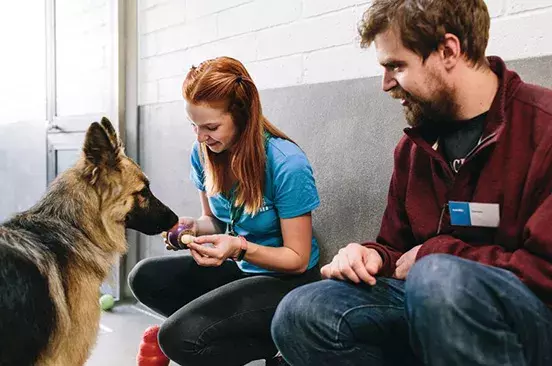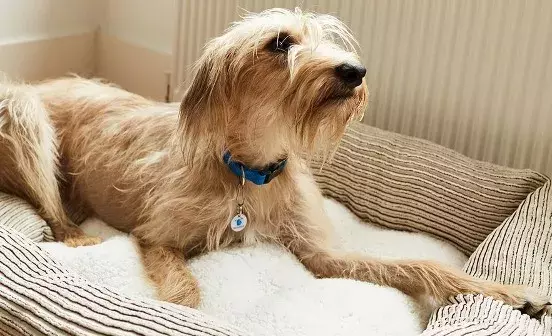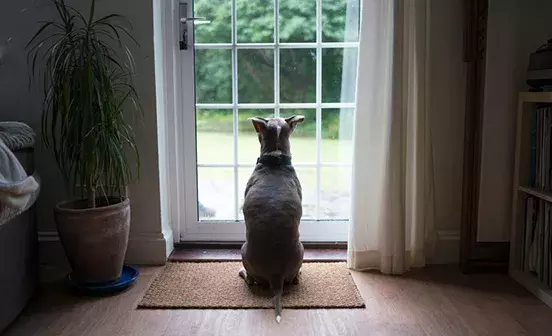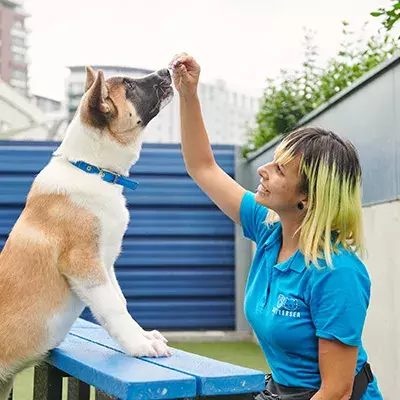A hold is when your dog picks up an object and holds it in their mouth on cue. A hold is the first step in teaching your dog to perform a more complex task, like picking up the TV remote or bringing you something when asked.
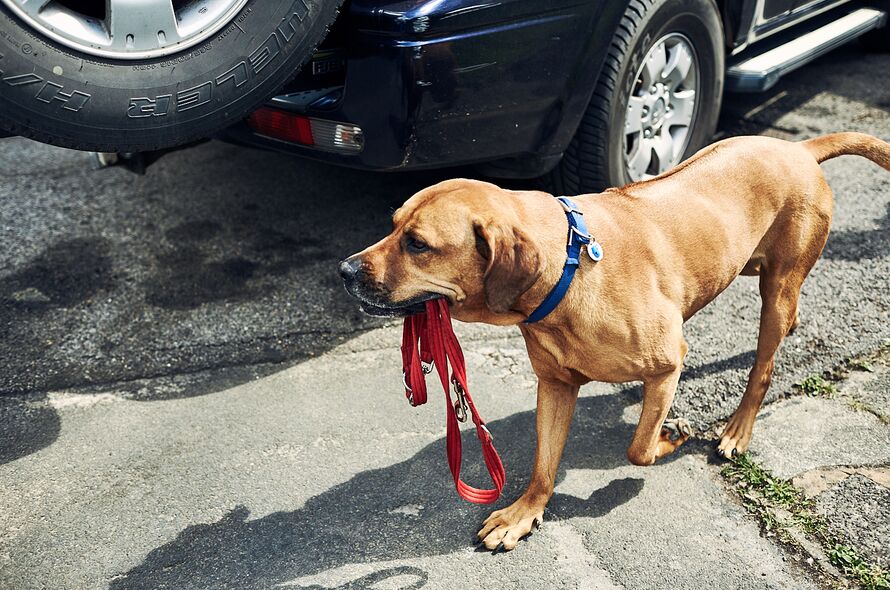
It’s best to start teaching a hold using an object that your dog will find easy to pick up, like a soft toy or a ball. If your dog gets overexcited by toys, then you may want to start with a different object. Eventually, you can move up to items that your dog is less likely to pick up, such as the TV remote or your keys.
You might find your dog moves through the steps quite quickly, or skips a few altogether, and that’s perfectly fine. Move at your dog’s pace. You should always give your dog regular breaks during training and remember to always put the object away at the end of a session.
If your dog has any possession issues with picking up certain toys or items then we would recommend you seek advice from a qualified trainer or behaviourist before starting this training.
Watch our video about how to teach your dog a hold, or check out the steps written out below:
STEP 1 – LOOKING AT THE ITEM
To start, have a food reward to hand. You don’t have to use a clicker for this training, but if you would like to, you can find more information in our clicker training advice.
To start, place the object on the floor and allow your dog to investigate it. Your dog is likely to investigate something as soon as it goes on the floor, so get ready with your cue word of “good or “yes” followed by a reward.
Depending on how keen your dog is, you may need to start off very simple, and reward your dog just for looking at the item. Say “Yes” at the exact moment your dog looks at the item, or click if you’re using a clicker, and then reward with the food. These actions before you give the food reward are called “marking”
If your dog isn’t interested in the item at all, you can place a piece of food next to it to encourage them to investigate. You can then mark and reward them for this behaviour.
STEP 2 – NOSE TOUCH
Next, you’re going to mark and reward the exact moment your dog’s nose touches the item. So that your dog has the chance to practice the behaviour each time, it’s also useful to throw a piece of food away from the item between touches, so that your dog has to return to complete the behaviour again.
STEP 3: OPEN MOUTH ON THE OBJECT
Now you’re going to move on to rewarding your dog for opening their mouth around the object.
You may find the next thing your dog does is nudge the object with their nose a few times. You’re not going to reward this, but by holding off, this should encourage them to open their mouth around the toy instead. As soon as they do this, click or say “Yes” and reward them. Keep repeating this until it’s happening quickly and consistently each time.
STEP 4: MOUTH AROUND THE ITEM
Next, you’re going to reward your dog when their whole mouth is around the object. Remember to only reward them once their whole mouth is open and around it. This might be a step your dog skips, from mouthing the object to lifting, but if not, then keep practicing until they’re doing this consistently.
STEP 5: LIFTING THE OBJECT OFF THE GROUND
Now, you’re going to start only rewarding your dog when they lift the object off the ground. When they lift the object any height from the ground, no matter how small, mark the action and reward them. As they become more confident with this you can then start to add duration, rewarding them when they hold the item for one second, then two seconds, etc.
STEP 6: INTRODUCE A VOICE CUE
At this point, you’re going to introduce your voice cue. Do this by saying “get it” or “hold”, just before they pick up the item. You can keep marking the action and make sure to reward them straight after. Keep practicing this using your cue word until your dog can successfully pick up the item when you ask.
STEP 7: TRY IT WITH DIFFERENT ITEMS
Once your dog can reliably hold the item for up to a minute, you can start introducing different items. You may find that you need to start the training from the beginning again, as your dog may find objects of different sizes and textures trickier. They should move through the stages again fairly quickly. You can also introduce different cue words for different items. For example, “Hold the ball” and “Hold the remote”.
If you’d like to teach your dog to let go of the object at the end of a hold, take a look at our advice on teaching a drop. You might also be interested in our advice on how these behaviours can be added together to teach your dog to fetch things.
Download this guidance as a handy advice sheet and use it to train regularly:
